
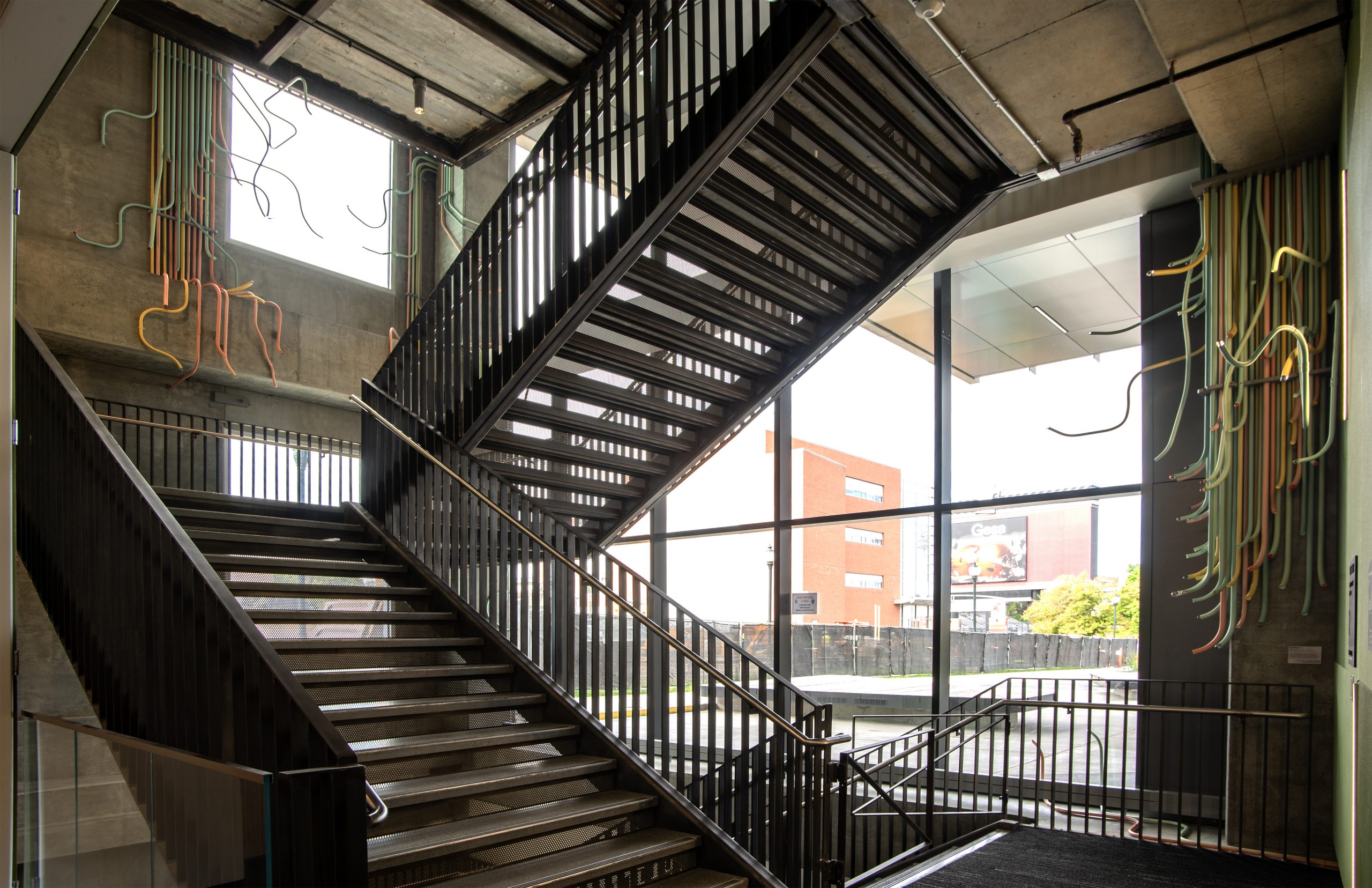
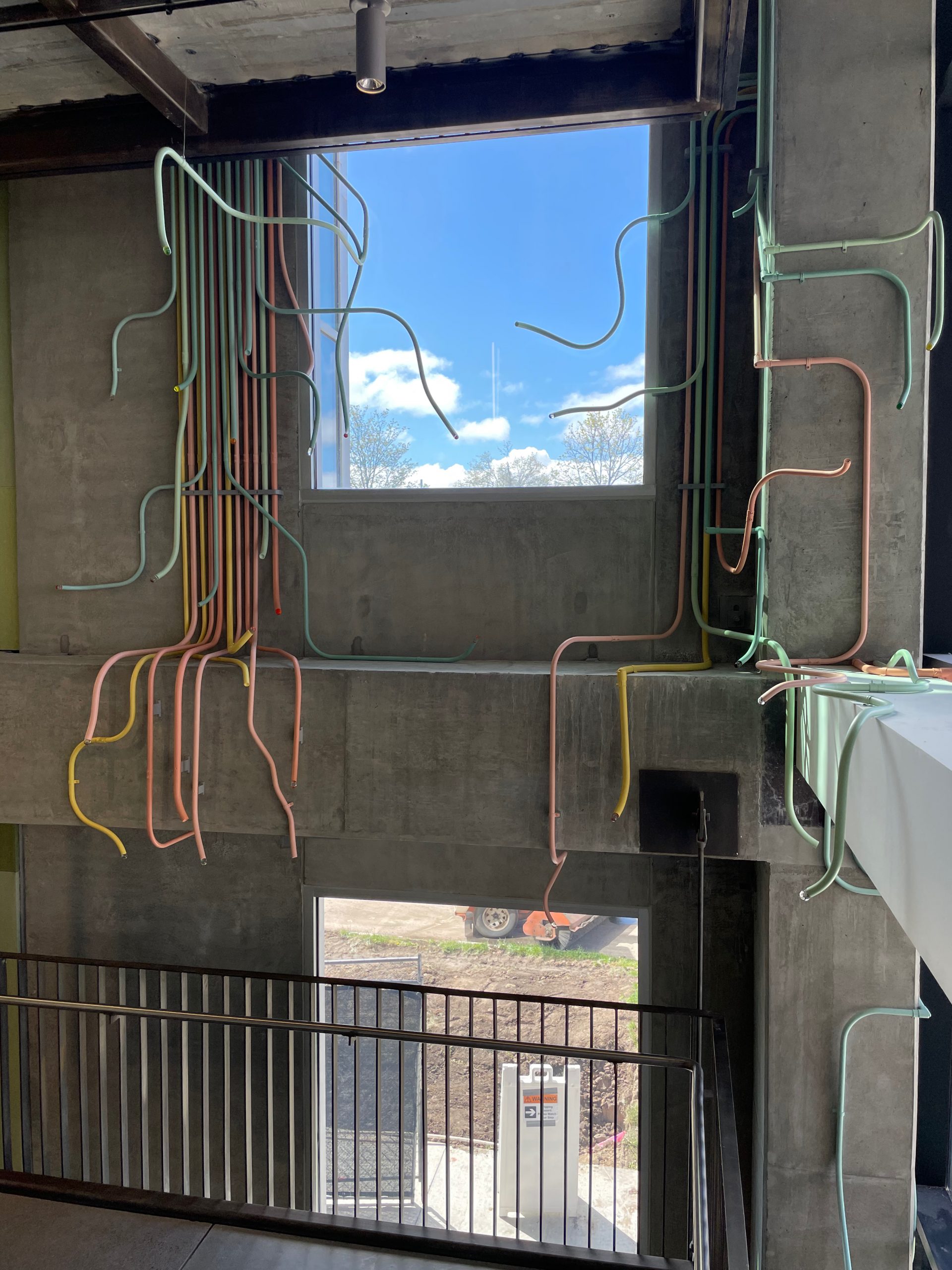
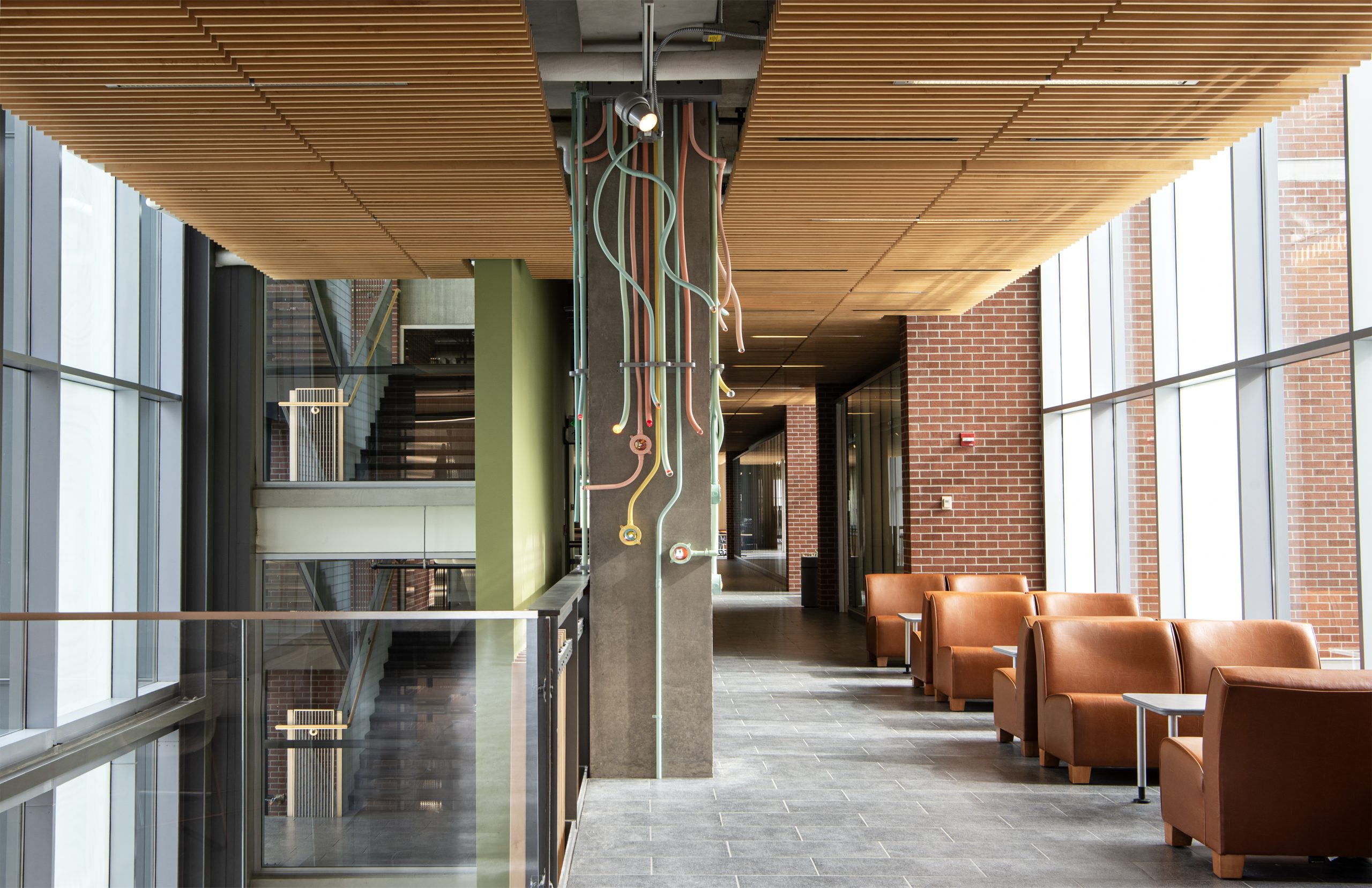
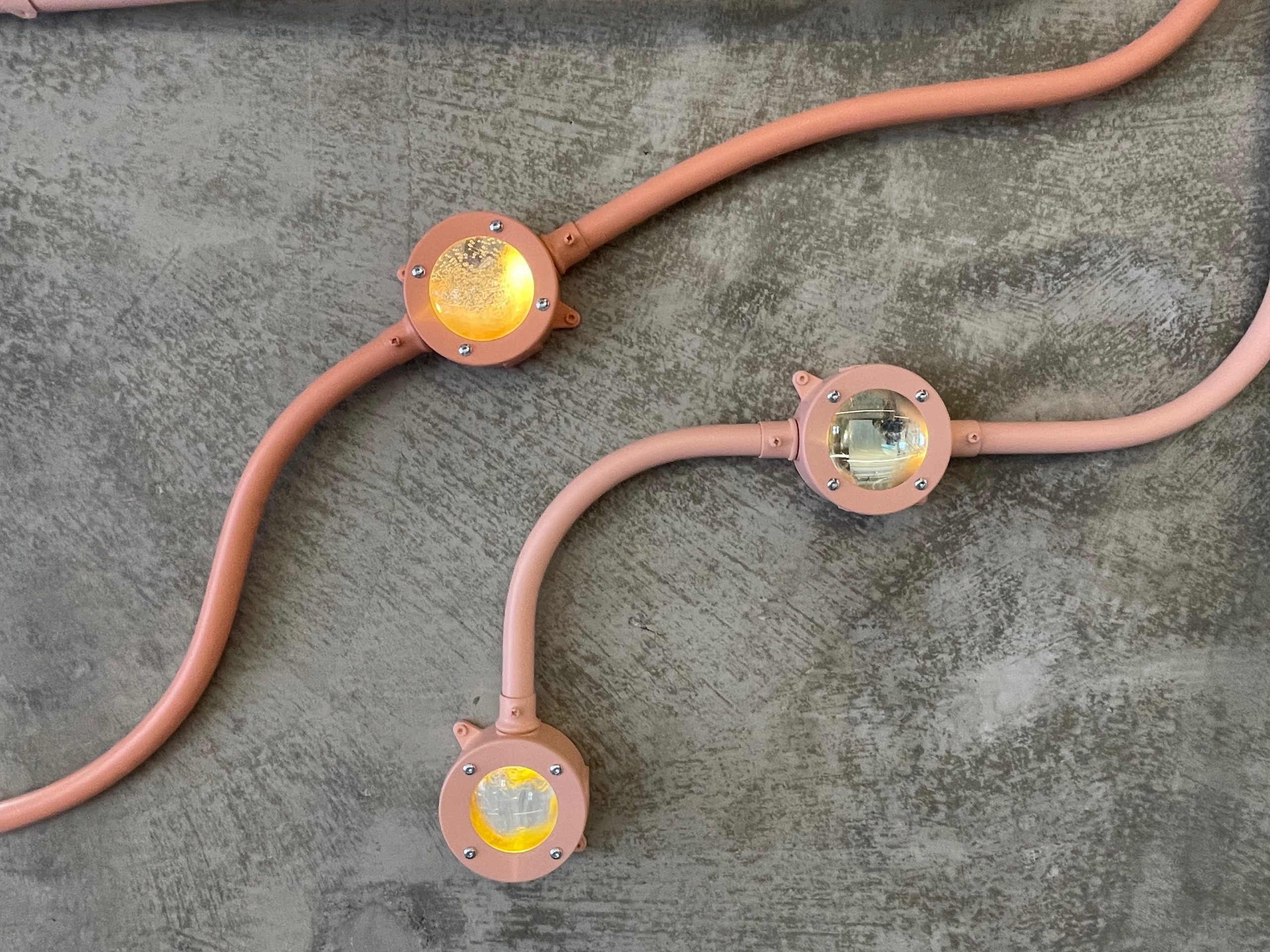
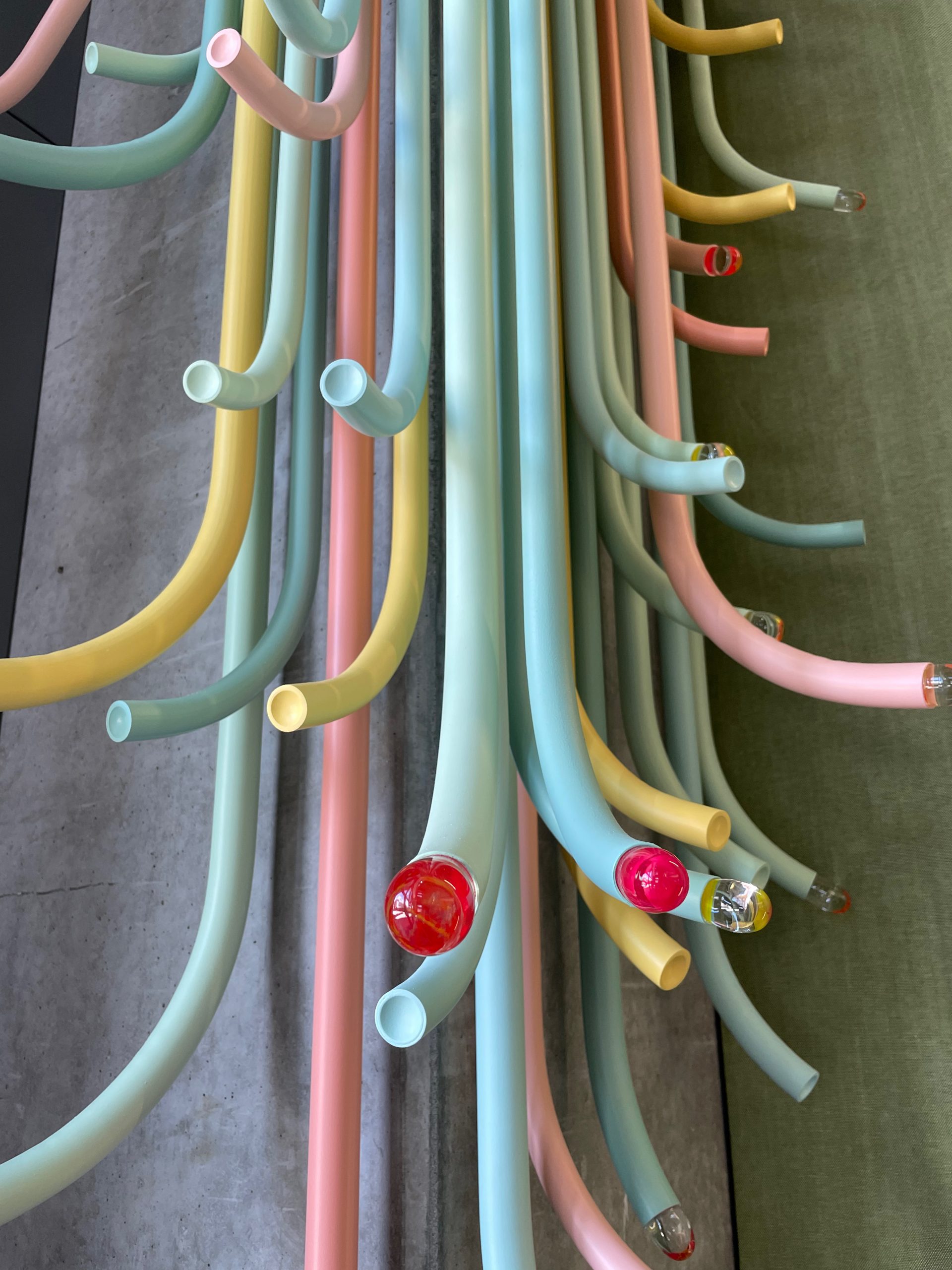
Client: ArtsWA and Washington State University
Location: Pullman, WA, United States
Completion date: 2024
Artwork budget: $200,000
Project Team
Artist
Erik Carlson
AREA C Projects
Artist
Erica Carpenter
AREA C Projects
Fabricator + Installer
Nick Hollibaugh
Box Elder Studio
Glass Fabricator
Adam Waimon
Adam Waimon Fine Art
Structural Engineer
Nick Geurts
Yetiweurks
Electrical Consultant
Jamie Murdock
Intern
Alex Murdock
AREA C Projects
Public Art Program Manager
Mike Sweney
ArtsWA
Overview
Constructed of metal conduit pipe, ENTWINE takes cues from the exposed infrastructure of the Plant Sciences Building
Goals
CONCEPT
This installation started with an aim to make an artwork that either acts like a plant or approaches the academic facility that houses it – WSU’s Plant Science Building – as a growth medium. It developed around ideas of profusion and entanglement: the ways that plants probe, flex, spread, suffuse and immerse themselves in the world, and the fact that human life could not have evolved as it has, nor exist as it does, without the questing incursions of plant life.
ENTWINE features masses of colorful, tendril-like tubes that emerge as wild elements from the pipes and ducts of this science facility’s exposed electrical, air and water systems. At multiple points throughout the building, these tendrils break from their more familiar counterparts to flow and climb across walls in the manner of rhizomes, roots or vines, turning their bulbed glass finials toward the viewer like curious eyes.
Taking its cues from the many ways that plants harness their neighbors and probe the earth in their sallies to find new places to grow, ENTWINE recruits the space that houses it to its own purposes, entangling itself with the air, water and electrical infrastructure that comprise the ‘life systems’ of the Plant Sciences Building in a way that blurs the line between building and artwork.
Process
OVERALL FORM
ENTWINE’s bundled tubes are inspired by similar forms that make up plant vascular systems. Crafted of standard steel electrical conduit (EMT) and conduit fittings, and shaped with regular pipe-bender’s tools, the tubes flow from the ‘vascular system’ of their host facility’s own electrical infrastructure in a way that brings something wild and distinctly plant-like into the Plant Sciences Building’s public spaces.
Additional Information
GLASS FINIALS Throughout the design, colored and illuminated glass finials invite the viewer to look closer, offering glimpses into vibrant colored interiors. The finials resemble eyes and are in fact inspired by the familiar ‘eyes’ of potatoes as well as the root-caps that help plant roots penetrate through the soil. Some of these finials are colored with transparent stained-glass paint and illuminated from behind. The unilluminated finials are reverse-painted in a palette of fluorescent colors which, not unlike plants that thrive in the shade, naturally make a high-energy return on even low-level ambient light. TUBE COLORS Color selection for the artwork began with an investigation into natural textile dyes created from plant species native to the Palouse, which we then color-matched using standard interior paint. The pastel palette reflects the softer colors that are typically achieved using plant dyes. Some of these colors are strikingly featured in antique woven husk bags made by the Nimiipuu; others are derived from hues made by contemporary foraging enthusiasts using different mordants to set their dyes.